Abstract
Angiogenesis is activated during multistage tumorigenesis prior to the emergence of solid tumors. Using a transgenic mouse model, we have tested the proposition that treatment with angiogenesis inhibitors can inhibit the progression of tumorigenesis after the switch to the angiogenic phenotype. In this model, islet cell carcinomas develop from multifocal, hyperproliferative nodules that show the histological hallmarks of human carcinoma in situ. Mice were treated with a combination of the angiogenesis inhibitor AGM-1470 (TNP-470), the antibiotic minocycline, and interferon alpha/beta. The treatment regimen markedly attenuated tumor growth but did not prevent tumor formation; tumor volume was reduced to 11% and capillary density to 40% of controls. The proliferation index of tumor cells in treated and control mice was similar, whereas the apoptotic index was doubled in treated tumors. This study shows that de novo tumor progression can be restricted solely by antiangiogenic therapy. The results suggest that angiogenesis inhibitors represent a valid component of anticancer strategies aimed at progression from discrete stages of tumorigenesis and demonstrate that transgenic mouse models can be used to evaluate efficacy of candidate antiangiogenic agents.
Full text
PDF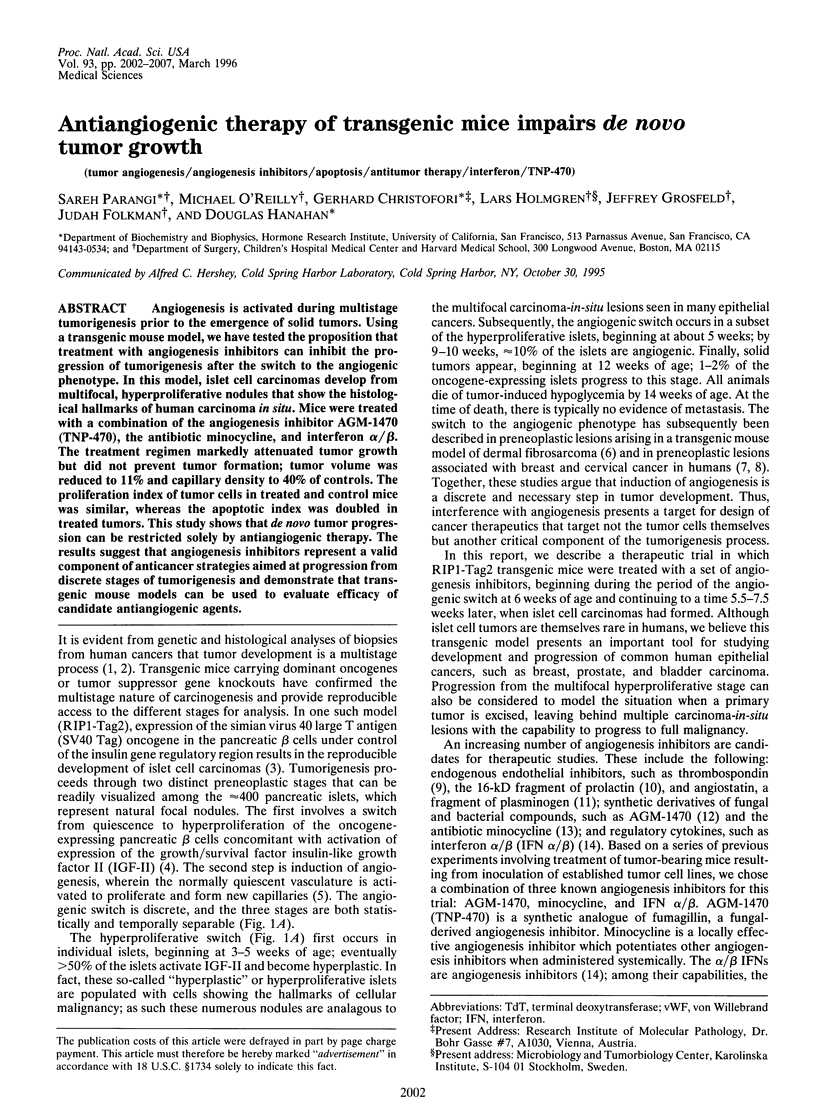
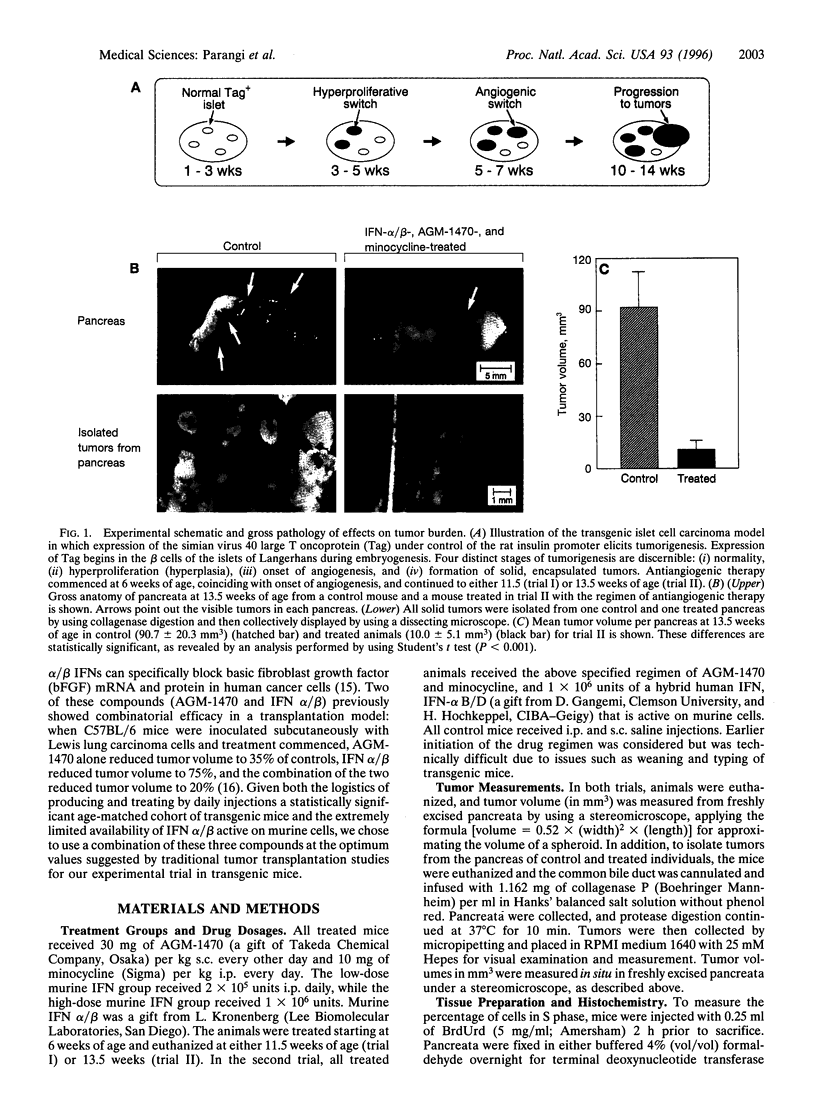
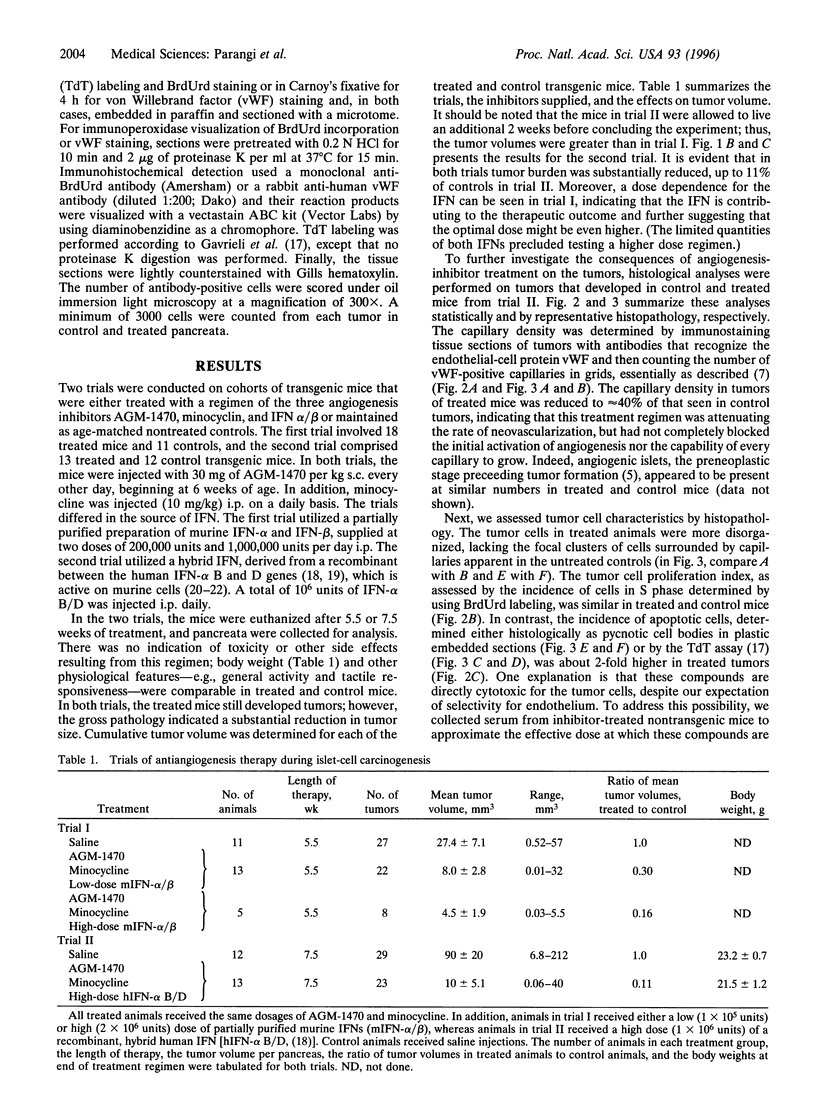
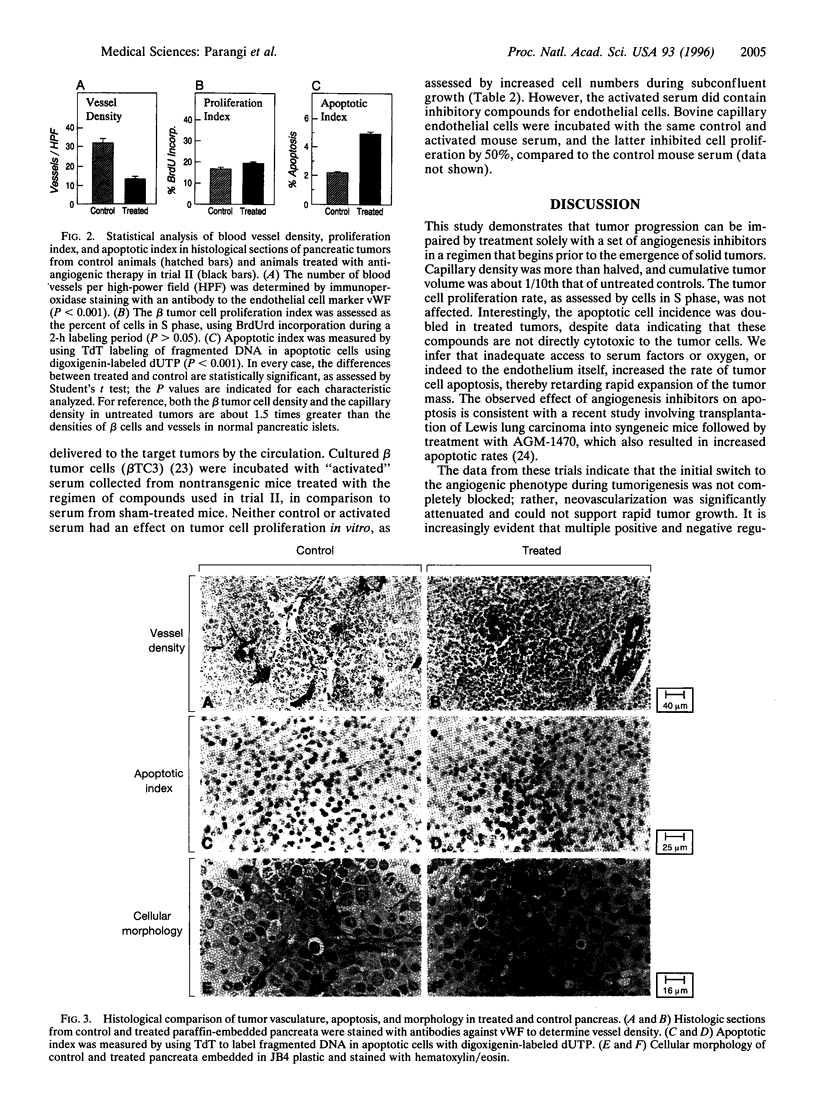
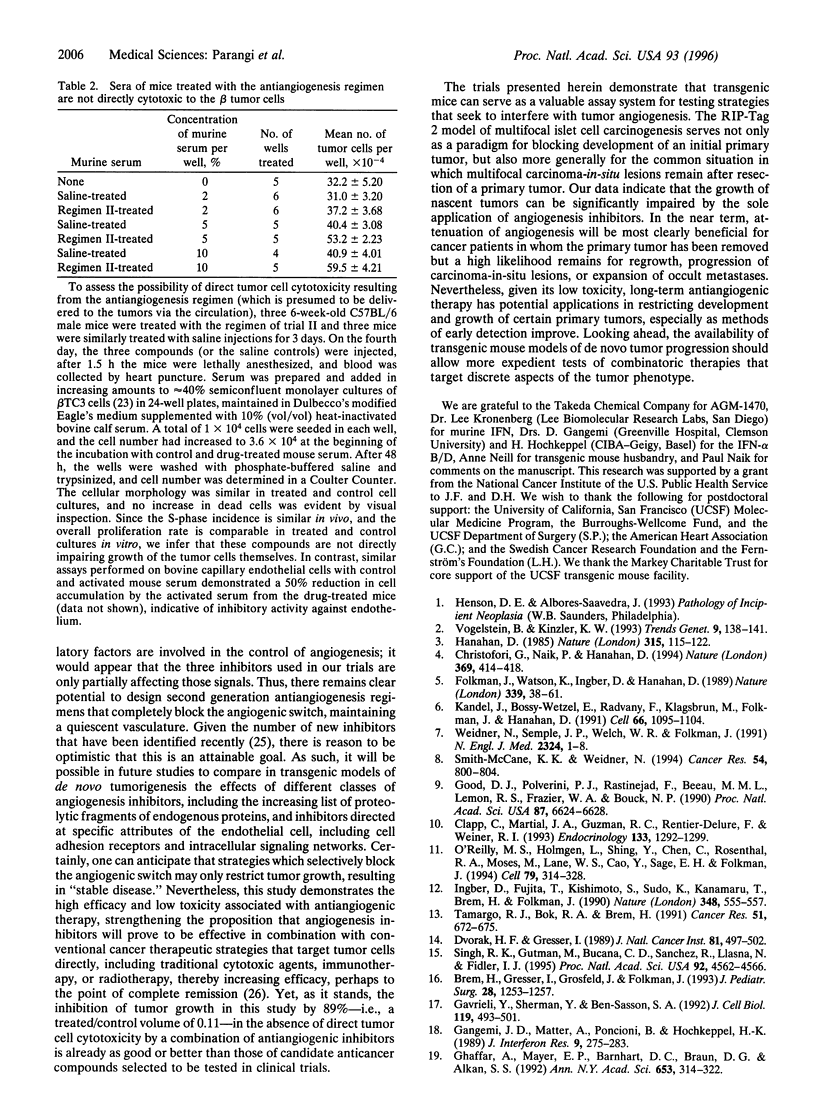
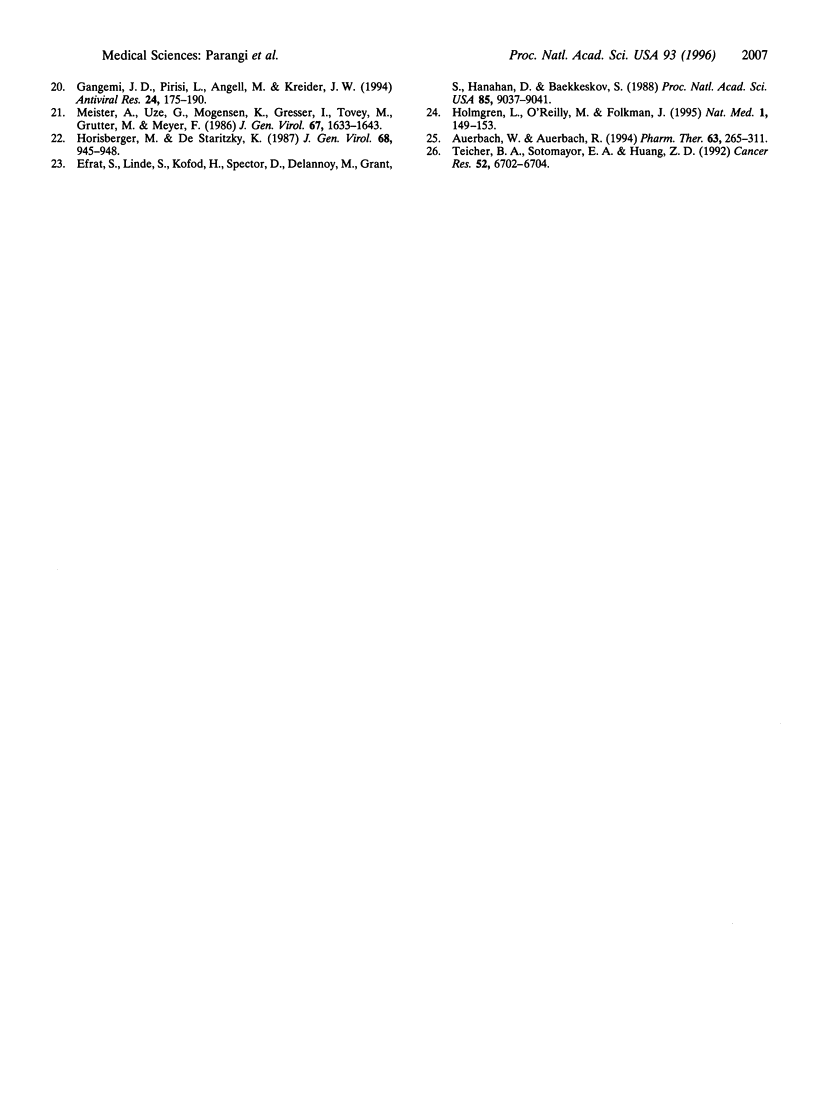
Images in this article
Selected References
These references are in PubMed. This may not be the complete list of references from this article.
- Auerbach W., Auerbach R. Angiogenesis inhibition: a review. Pharmacol Ther. 1994 Sep;63(3):265–311. doi: 10.1016/0163-7258(94)90027-2. [DOI] [PubMed] [Google Scholar]
- Brem H., Gresser I., Grosfeld J., Folkman J. The combination of antiangiogenic agents to inhibit primary tumor growth and metastasis. J Pediatr Surg. 1993 Oct;28(10):1253–1257. doi: 10.1016/s0022-3468(05)80308-2. [DOI] [PubMed] [Google Scholar]
- Christofori G., Naik P., Hanahan D. A second signal supplied by insulin-like growth factor II in oncogene-induced tumorigenesis. Nature. 1994 Jun 2;369(6479):414–418. doi: 10.1038/369414a0. [DOI] [PubMed] [Google Scholar]
- Clapp C., Martial J. A., Guzman R. C., Rentier-Delure F., Weiner R. I. The 16-kilodalton N-terminal fragment of human prolactin is a potent inhibitor of angiogenesis. Endocrinology. 1993 Sep;133(3):1292–1299. doi: 10.1210/endo.133.3.7689950. [DOI] [PubMed] [Google Scholar]
- Dvorak H. F., Gresser I. Microvascular injury in pathogenesis of interferon-induced necrosis of subcutaneous tumors in mice. J Natl Cancer Inst. 1989 Apr 5;81(7):497–502. doi: 10.1093/jnci/81.7.497. [DOI] [PubMed] [Google Scholar]
- Efrat S., Linde S., Kofod H., Spector D., Delannoy M., Grant S., Hanahan D., Baekkeskov S. Beta-cell lines derived from transgenic mice expressing a hybrid insulin gene-oncogene. Proc Natl Acad Sci U S A. 1988 Dec;85(23):9037–9041. doi: 10.1073/pnas.85.23.9037. [DOI] [PMC free article] [PubMed] [Google Scholar]
- Folkman J., Watson K., Ingber D., Hanahan D. Induction of angiogenesis during the transition from hyperplasia to neoplasia. Nature. 1989 May 4;339(6219):58–61. doi: 10.1038/339058a0. [DOI] [PubMed] [Google Scholar]
- Gangemi J. D., Matter A., Poncioni B., Hochkeppel H. K. Significant differences in therapeutic responses to a human interferon-alpha B/D hybrid in Rauscher or Friend murine leukemia virus infections. J Interferon Res. 1989 Jun;9(3):275–283. doi: 10.1089/jir.1989.9.275. [DOI] [PubMed] [Google Scholar]
- Gangemi J. D., Pirisi L., Angell M., Kreider J. W. HPV replication in experimental models: effects of interferon. Antiviral Res. 1994 Jul;24(2-3):175–190. doi: 10.1016/0166-3542(94)90066-3. [DOI] [PubMed] [Google Scholar]
- Gavrieli Y., Sherman Y., Ben-Sasson S. A. Identification of programmed cell death in situ via specific labeling of nuclear DNA fragmentation. J Cell Biol. 1992 Nov;119(3):493–501. doi: 10.1083/jcb.119.3.493. [DOI] [PMC free article] [PubMed] [Google Scholar]
- Ghaffar A., Mayer E. P., Barnhart D. C., Pyo S., Szymaniec S., Hochkeppel H. K., Gangemi J. D. Cross-species antiviral activity of a recombinant human alpha-interferon hybrid. Ann N Y Acad Sci. 1992 Jun 16;653:314–322. doi: 10.1111/j.1749-6632.1992.tb19658.x. [DOI] [PubMed] [Google Scholar]
- Good D. J., Polverini P. J., Rastinejad F., Le Beau M. M., Lemons R. S., Frazier W. A., Bouck N. P. A tumor suppressor-dependent inhibitor of angiogenesis is immunologically and functionally indistinguishable from a fragment of thrombospondin. Proc Natl Acad Sci U S A. 1990 Sep;87(17):6624–6628. doi: 10.1073/pnas.87.17.6624. [DOI] [PMC free article] [PubMed] [Google Scholar]
- Hanahan D. Heritable formation of pancreatic beta-cell tumours in transgenic mice expressing recombinant insulin/simian virus 40 oncogenes. Nature. 1985 May 9;315(6015):115–122. doi: 10.1038/315115a0. [DOI] [PubMed] [Google Scholar]
- Holmgren L., O'Reilly M. S., Folkman J. Dormancy of micrometastases: balanced proliferation and apoptosis in the presence of angiogenesis suppression. Nat Med. 1995 Feb;1(2):149–153. doi: 10.1038/nm0295-149. [DOI] [PubMed] [Google Scholar]
- Horisberger M. A., de Staritzky K. A recombinant human interferon-alpha B/D hybrid with a broad host-range. J Gen Virol. 1987 Mar;68(Pt 3):945–948. doi: 10.1099/0022-1317-68-3-945. [DOI] [PubMed] [Google Scholar]
- Ingber D., Fujita T., Kishimoto S., Sudo K., Kanamaru T., Brem H., Folkman J. Synthetic analogues of fumagillin that inhibit angiogenesis and suppress tumour growth. Nature. 1990 Dec 6;348(6301):555–557. doi: 10.1038/348555a0. [DOI] [PubMed] [Google Scholar]
- Kandel J., Bossy-Wetzel E., Radvanyi F., Klagsbrun M., Folkman J., Hanahan D. Neovascularization is associated with a switch to the export of bFGF in the multistep development of fibrosarcoma. Cell. 1991 Sep 20;66(6):1095–1104. doi: 10.1016/0092-8674(91)90033-u. [DOI] [PubMed] [Google Scholar]
- Meister A., Uzé G., Mogensen K. E., Gresser I., Tovey M. G., Grütter M., Meyer F. Biological activities and receptor binding of two human recombinant interferons and their hybrids. J Gen Virol. 1986 Aug;67(Pt 8):1633–1643. doi: 10.1099/0022-1317-67-8-1633. [DOI] [PubMed] [Google Scholar]
- O'Reilly M. S., Holmgren L., Shing Y., Chen C., Rosenthal R. A., Moses M., Lane W. S., Cao Y., Sage E. H., Folkman J. Angiostatin: a novel angiogenesis inhibitor that mediates the suppression of metastases by a Lewis lung carcinoma. Cell. 1994 Oct 21;79(2):315–328. doi: 10.1016/0092-8674(94)90200-3. [DOI] [PubMed] [Google Scholar]
- Singh R. K., Gutman M., Bucana C. D., Sanchez R., Llansa N., Fidler I. J. Interferons alpha and beta down-regulate the expression of basic fibroblast growth factor in human carcinomas. Proc Natl Acad Sci U S A. 1995 May 9;92(10):4562–4566. doi: 10.1073/pnas.92.10.4562. [DOI] [PMC free article] [PubMed] [Google Scholar]
- Smith-McCune K. K., Weidner N. Demonstration and characterization of the angiogenic properties of cervical dysplasia. Cancer Res. 1994 Feb 1;54(3):800–804. [PubMed] [Google Scholar]
- Tamargo R. J., Bok R. A., Brem H. Angiogenesis inhibition by minocycline. Cancer Res. 1991 Jan 15;51(2):672–675. [PubMed] [Google Scholar]
- Teicher B. A., Sotomayor E. A., Huang Z. D. Antiangiogenic agents potentiate cytotoxic cancer therapies against primary and metastatic disease. Cancer Res. 1992 Dec 1;52(23):6702–6704. [PubMed] [Google Scholar]
- Vogelstein B., Kinzler K. W. The multistep nature of cancer. Trends Genet. 1993 Apr;9(4):138–141. doi: 10.1016/0168-9525(93)90209-z. [DOI] [PubMed] [Google Scholar]
- Weidner N., Semple J. P., Welch W. R., Folkman J. Tumor angiogenesis and metastasis--correlation in invasive breast carcinoma. N Engl J Med. 1991 Jan 3;324(1):1–8. doi: 10.1056/NEJM199101033240101. [DOI] [PubMed] [Google Scholar]




